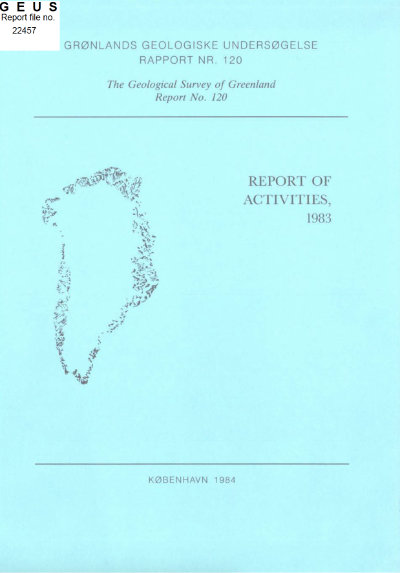The Kap København Formation, a late Cainozoic sedimentary sequence in North Greenland
DOI:
https://doi.org/10.34194/rapggu.v120.7851Abstract
The Kap København sequence is a c. 300 km2 deposit of unconsolidated sand, silt and clay, more than 100 m thick, on the shores of Independence Fjord, lat. 82°30'N, in eastern Peary Land (fig. 3). The sediments contain abundant well preserved plant and animal remains, probably Pliocene or Pleistocene. The occurrence was first discovered in 1979 by Funder & Hjort (1980). Later, analyses of organic remains gave interesting results (Fredskild & Røen, 1982; Mogensen, in press), and in 1983 the sediments were the object of a detailed study during a combined geological and biological expedition to the area. This report presents the first results from this expedition, and formally names the sediments the Kap København Formation. The sediments of the Kap København Formation form a characteristic landscape of e10ngated hills with altitudes up to 230 m above sea level. The hills are the eroded remnants of a once continuous deposit that extended from Vitskøl Elv in the west and beyond Mudderbugt in the east, where it disappears below younger glacial deposits. To the north the sediments terminate abruptly on the south bank of Ladegårdsåen, while in the south they are eroded and disappear under glacial and Holocene marine sediments along the coast (fig. 4).
Downloads
Published
Issue
Section
License
This article is distributed under a CC-BY 4.0 licence, permitting free redistribution and reproduction for any purpose, even commercial, provided proper citation of the original work. Author(s) retain copyright over the article contents.


